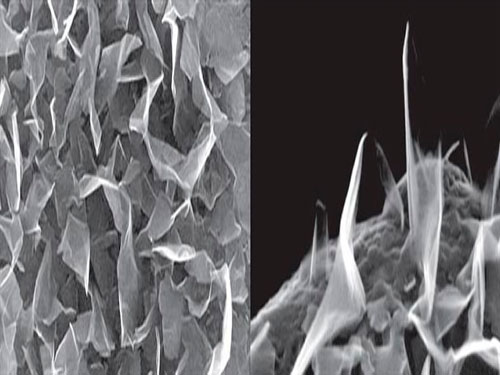 According to a recent report by the American Physicists Organization Network, US researchers have created a new type of supercapacitor (DLC) that can be charged in less than 1 millisecond and successfully tested in AC circuits. Related papers were published in the recently published "Science" magazine.
According to a recent report by the American Physicists Organization Network, US researchers have created a new type of supercapacitor (DLC) that can be charged in less than 1 millisecond and successfully tested in AC circuits. Related papers were published in the recently published "Science" magazine. Super capacitor, also called double layer capacitor, is a new energy storage device that can be charged in a few seconds. It also has the characteristics of large capacity, high power, long service life, economic and environmental protection, etc., in digital cameras and handheld computers. New energy vehicles and other fields have extensive application value.
The super capacitor mainly stores the charge through the surface of the conductor. Therefore, the larger the area for storing the charge and the denser the separated charge, the larger the capacitance. At present, supercapacitors mostly use a porous activated carbon structure to expand the energy storage area. This large surface area, together with a very small charge separation distance, allows it to have a larger energy storage capacity than ordinary capacitors, and has a higher energy transfer rate than batteries. Faster. However, for some devices, the charge time in this area is still a few seconds longer.
A research team led by John Miller, president of JME Corp. (a capacitor company in Shek Heights, Ohio), has designed the structure and electrodes of supercapacitors to reduce their charging time to 200 hours. Microseconds (each human blinking time is about 0.2 seconds - 0.4 seconds, that is, 200,000 microseconds - 400,000 microseconds). The new electrode was designed by Ron Outlaw of William and Mary College in Virginia, USA. The whole is composed of a group of graphene-based sheets perpendicular to the base: the graphene-based sheet is only one atom thick and is plasma-chemically deposited; its base is made of 10 nanometer thick graphite. Miller called it "a group of 600-nanometer tall potato chips standing side by side." Experiments have shown that the new capacitor is more efficient and can be charged in a shorter time than the original supercapacitor made of porous activated carbon.
According to Miller’s team, this new supercapacitor can not only replace conventional capacitors that are six times larger, but also provide better space for voltage fluctuations in the circuit. In addition, the capacitor has also been successful in the test of an AC rectifying filter circuit. Previously, due to the fact that the resistivity of porous activated carbon was significantly greater than that of metal, the supercapacitor was once considered to be unavailable for AC circuits.
Ron Outlaw said that in the next step they will also try to make the graphene sheets longer and more parallel to find a balance between the maximum capacitance and the minimum flow of ion currents, allowing the supercapacitors to perform better. As the weight and size are gradually reduced, super capacitors will also be applied in many fields such as aviation, aerospace, and military.